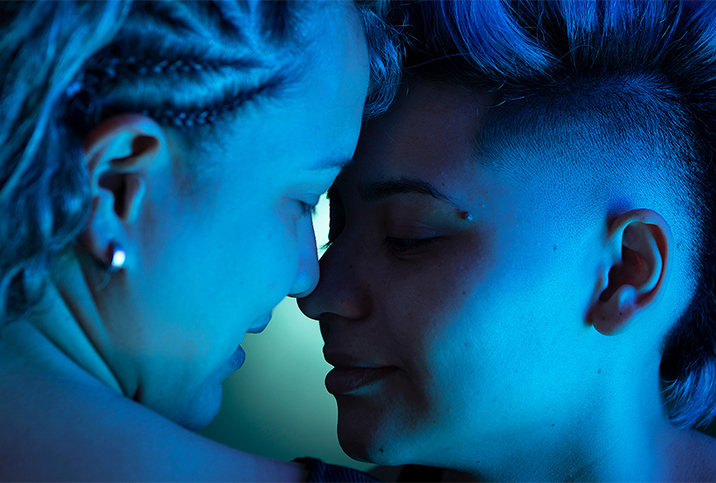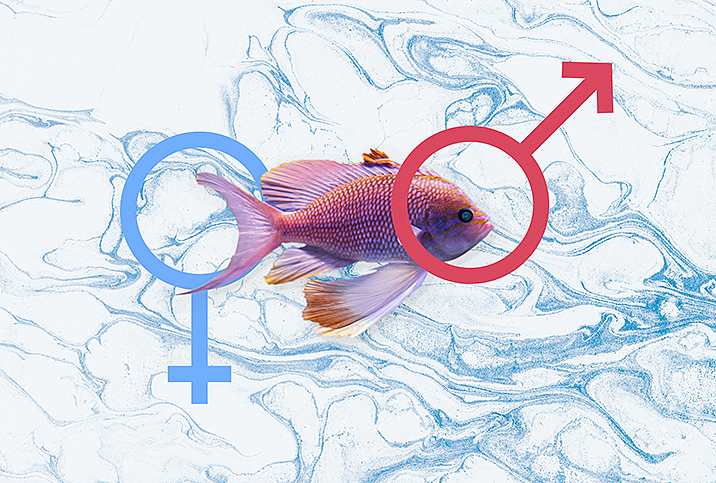Identity & Sexuality: Myths & Misconceptions

Exploring your sexuality—or gaining a better understanding of and respect for the sexualities of others—can be a bit of a project. There's so much information out there, and much of the knowledge around sexual identity is still evolving. Even more confusing, not everything you hear is true. Even as LGBTQIA identities have become more normalized in popular culture and hard-fought civil rights battles have been slowly won, many myths and misconceptions have persisted. Let's break them down, shall we?
Myth: Sexuality is a choice.
Reality: To be fair, this one actually seems to be going out of style fast—after all, it's one of the basic arguments underpinning antidiscrimination legislation. But there's a long history of dismissing non-straight sexualities in particular as "lifestyle choices" or "preferences," and it's one that continues to reverberate in certain circles today.
But whether you're gay, straight or somewhere in between, the official position of the American Psychological Association is that sexual orientation is not a conscious, intentional choice, and therefore not something that can be voluntarily changed. Furthermore, homosexuality has not been considered a mental illness since 1973, and "gender identity disorder" was removed from the DSM—short for the Diagnostic and Statistical Manual of Mental Disorders, essentially the psychology Bible—in 2013.
Which is to say: Whoever you are and whoever you want, you're totally normal. And while actions are choices, there's no scientific reason not to present the way you want to or engage in safe sexual activities with consenting adults.
Myth: Sexual identity is static.
Reality: While we might not be able to voluntarily change our sexualities, that doesn't mean they never change. Research published in 2019 in the Journal of Sex Research suggested that sexuality continues to be fluid throughout and long after adolescence—and, indeed, challenges the concept of categorizing sexual identity in the first place.
While stuffing sexual identities into neat, well-defined boxes—straight, gay, bisexual and so on—might feel comforting and affirming, it's not always an accurate depiction of the complex and shifting nature of sexual attraction and behavior. Case in point: The emergence of new categories like "heteroflexible" or "homoflexible" on OKCupid.
Christine Kaestle, a professor of developmental health at Virginia Polytechnic Institute and State University and the author of the aforementioned Journal of Sex Research study, put it: "Because sexual orientation involves a set of various life experiences over time, categories will always feel artificial and static. We will always struggle with imposing categories onto sexual orientation."
Myth: You can tell someone's sexuality by looking at them.
Reality: Anecdotally, gaydar is a generally accepted thing. But…is it real? While you may have a history of accurately guessing someone's sexuality, it's not actually a given that someone who "looks gay" or "acts gay" actually is. (Same for someone who looks or acts straight, by the way.)
In many cases, the rub lies in the distinction between gender expression and sexual orientation—which, yes, are two separate things. According to the Human Rights Campaign, "sexual orientation" refers to who you're emotionally, romantically and sexually attracted to, while "gender expression" is all about the "external appearance of one's gender identity, usually expressed through behavior, clothing, haircut or voice." ("Gender identity" is how you perceive yourself as male, female, a blend of both or none of the above.)
And there are real-world examples of how people don't always present in a way that's intuitive to a heteronormative, patriarchal world. Straight butch women exist, as do extremely feminine lesbians. Some drag queens identify as male and date women, like Scaredy Kat of "RuPaul's Drag Race" fame. Basically, if you want to know someone's sexual identity, you're probably going to have to (respectfully) ask them.
Myth: Your sexual orientation is defined by who you're with.
Reality: Your sexual orientation isn't about who you're with—it's about who you want to be with. Ideally, of course, there's some overlap between those two categories. But this myth can get particularly sticky for those who are attracted to more than one gender. It's easy for someone's queerness to functionally disappear if they're in what looks like a straight relationship from the outside. In fact, it's a problem so common, it's got a name: bi erasure.
While bi erasure might not seem like a big deal, it can leave bisexual people—and anyone who's attracted to multiple genders—feeling invisible and dismissed from the LGBTQ community, like they're "not queer enough." So, again, rather than assuming someone's identity based on what can be perceived from the outside, it's better to listen to what people say about themselves and their sexuality.
Myth: Monosexuality is more common.
Reality: Monosexuality—being attracted to only one gender—tends to be the cultural assumption for most people, as it's easier to categorize someone as either gay or straight without considering that they might be somewhere in between. But actually, according to UCLA's Williams Institute, bisexual people make up the largest proportion of the LGB community, accounting for more than half of non-straight cisgender people.
And that number may be growing. Some recent studies show that younger people may be moving away from the idea of assumptive monosexuality, and taking on identities that are even more expansive than "bisexual" (like "pansexual" or, simply, "queer"). As Gen Z ages into the majority and older ideas die off, this myth may disappear entirely.


















